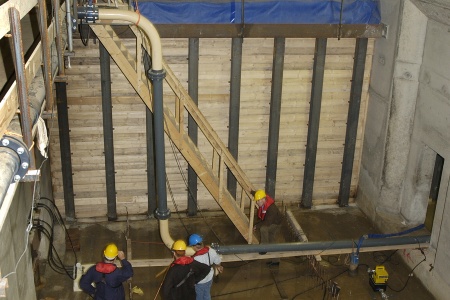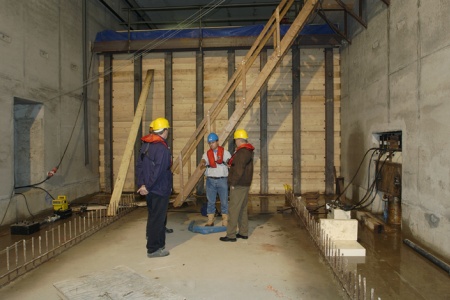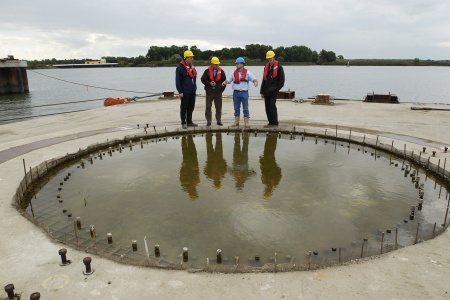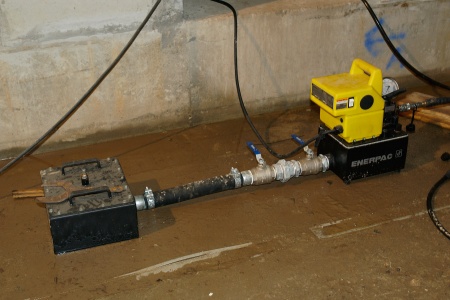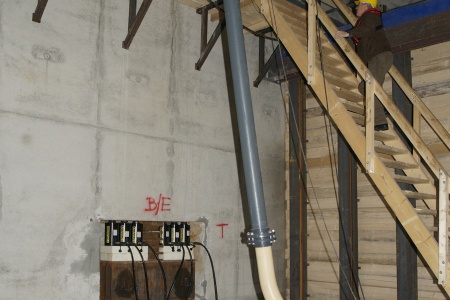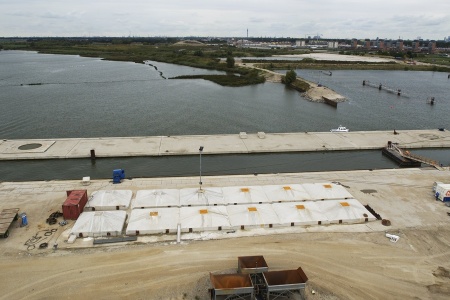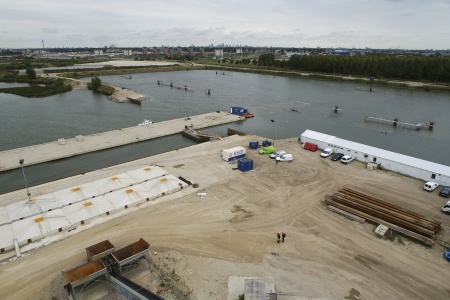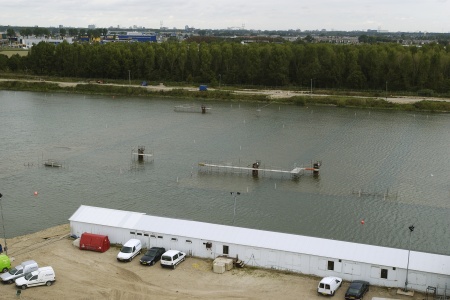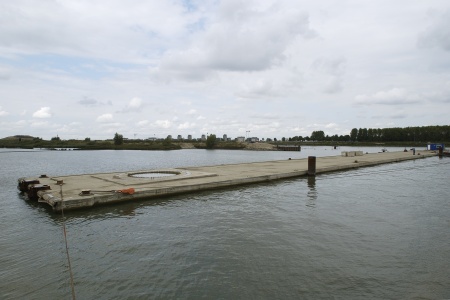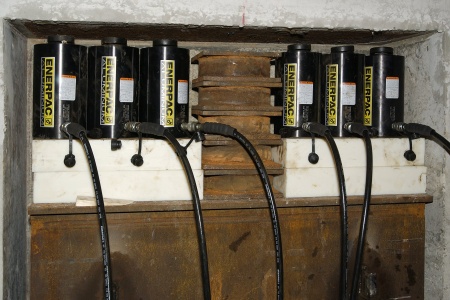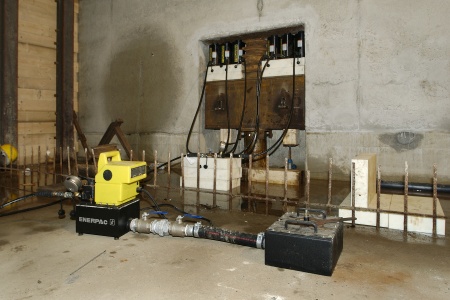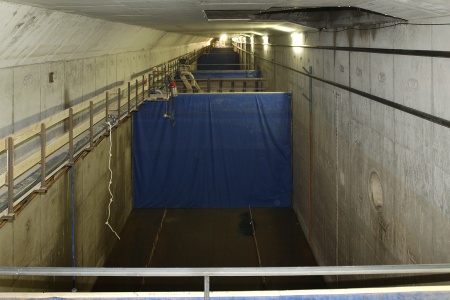Aluminum jacks help with submersion and positioning of tunnel elements
Customer:HSL Drechtse Steden
Location:Oude Maas, Barendrecht, The Netherlands
Everything aimed towards minimum weight
Hydraulics from Enerpac comes to the aid of the tunnel builders of the Construction Syndicate HSL Drechtsche Steden in submerging tunnel elements under the Dordtsche Kil and the Oude Maas rivers. Striking is the application of lightweight hydraulic jacks manufactured entirely from aluminum. The purpose of this is to minimize the weight of all tooling and to ensure proper working conditions.A specially prepared construction dock alongside the Oude Maas at Barendrecht contains 14 concrete submersion tunnel elements ready to be towed to their submersion points in the Dordtsche Kil and the Oude Maas. The tunnels form part of the High Speed Line- South. Each element is a concrete tube about 18 metres wide and 10 metres high that has been sealed on both sides with a concrete wall. In this concrete tube separate reservoirs have been placed that can be filled with water allowing the tunnel elements to be made lighter or heavier than water. Floating without ballast they have a freeboard of some 1 metre. In total 14 floating concrete barges will be sunk at the tunnel location: 9 elements of 150 metres long and 5 elements of 135 metres long.
One tunnel element per weekend
‘According to planning all tunnel elements are supposed to be in place by the end of 2003. To meet this target we are transporting one element per week to the submersion point and because these are busy shipping lanes we do that during weekends when all shipping traffic is stopped’, recounts Martijn Jansen. He is as project planner closely involved with the construction and submersion of the elements.
For the submersion point under the Oude Maas that means transport of tunnel elements over a distance of 7 km in the river, while for the Dordtsche Kil the distance is 17 km. In the Oude Maas three elements will ultimately be placed in each bank with one under the river. In the Dordtsche Kil, where the HSL-tunnel crosses the river under 45o, two elements on each bank and three under the river.
Hydraulic positioning
At the submersion point the tunnel elements are suspended from the winches, the water reservoirs filled and the elements carefully lowered to their locations. This results in the roof of the tunnel ending some 10 metres below the water surface. Hydraulics are employed in this submersion phase. Each element is in fact fitted with four solid steel supporting feet with a diameter of 300 mm that are jacked using hydraulic aluminium jacks from Enerpac. For each support foot 6 single-operating jacks are used with an operating pressure of 700 bar and a lifting capacity of 100 ton.The steel feet function as temporary support. When the tunnel element is finally securely in place, sand is sprayed into the dredged groove between the riverbed and the underside of the element. And when all the tunnel elements have been placed, they are filled in all round with soil.
In the floor of each element a grease-packed seal is installed for the support feet, as in the case of the screw spindle seal of a ship. A heavy steel girder forms a fixed leveling point relative to which the concrete structure can be lifted and lowered.
‘When placing the tunnel element on the feet it will rise to the water surface because of the weight of the element, but the hydraulic jacks hold them back. To lift the element the hydraulic jacks are extended. Conversely – and then we begin halfway through the stroke – when we want to lower the element millimetre by millimetre, we retract the jacks slightly. In this way we are able to position the tunnel element extremely precisely, to the millimetre’, explains Martijn Jansen.
The hydraulic jacks have a stroke of 15 cm. That means that there is 15 cm clearance on the pin. In order to be able to bridge over a greater distance when positioning, white nylon cribbing blocks are used. When the jacks are at the end of their stroke these nylon cribbing blocks are placed between the jacks and the steel girder.
Aluminium jacks
All structures and parts that are required for the submerging process are designed to have the lowest possible weight. According to Jansen that has to do with the procedures that have to be followed, such as the moving and positioning of the jacks. ‘We have done everything to keep the weight as low as possible, meaning that the procedures are also correct from the point of view of working conditions.’Unique to the Enerpac RAC series aluminum cylinders that are used for the submerging procedure is that they are manufactured entirely from the aluminium alloy 7075-T6 and weigh only 20 kilogram. Both the plunger and the housing are made from hard-anodized aluminum. Because of this the material is not only weight saving but also provides a hard and wear-resistant surface that offers better resistance to corrosion and damage than steel. Only the saddle is from steel, but had to be because of its function. This in contrast to other lightweight jacks that still in all cases have a steel plunger and provide less weight advantage.
Mono-Rail
‘The alternative was two larger jacks, but then we would have needed a winch system or something with monorails to position the jacks and then remove them. That’s why we opted for this solution’, according to Jansen. 72 jacks in total have been purchased, of which 48 are in circulation for this tunneling project. One set is being retained as reserve.
